Growing Brussels Sprouts With Ade Sellars – A Useful Crop At The Coldest Time Of Year

VEGETABLES > GEMMIFERA

Elizabeth is a Permaculture Garden Designer, Sustainability Consultant and Professional Writer, working as an advocate for positive change. She graduated from the University of St. Andrews with an MA in English and Philosophy and obtained a Diploma in Applied Permaculture Design from the Permaculture Association.
Reviewed By PETER LICKORISH

Peter is a Horticulture Lecturer and self-employed Horticulturist, with a passion for diverse areas of the industry - from garden design to the science behind plant growth and propagation. He has completed the Royal Horticultural Society’s Master of Horticulture (MHort) Award and lectures on RHS courses at Bedford College.
Contributions From ADE SELLARS

Ade is a professional Gardener, Presenter, Writer and Content Producer, with a passion for growing food in his kitchen garden. Along with his wife Sophie, they co-write the award-winning garden and food blog, Agents of Field. Having spent twenty years working in television as a Director and Editor, Ade re-trained and gained his RHS qualifications. In 2018 he gave up the London life to move to rural Suffolk to build his own kitchen garden and lead ‘The Good Life’.
IN THIS GUIDE
GEMMIFERA GUIDES
Brussels sprouts are one of those vegetables people either love or loathe.
But for many, either way, they are considered an integral part of the traditional Christmas dinner and can be a useful part of the diet over the coldest part of the year.
Like many other brassica crops, they can be a great addition to homegrown crops and are a good choice for those who want to grow their own all year round.
Brussels sprouts are, admittedly, not the easiest brassica crop to grow, but they are a vegetable that even novice gardeners can take on.
As long as you remember a few basic things, you should find that you are able to grow this crop successfully, wherever you live in the UK.
Overview
| Botanical Name | Brassica oleracea var. gemmifera |
| Common Name(s) | Brussels Sprouts |
| Plant Type | Vegetable |
| Native Area | Cultivated |
| Hardiness Rating | H4-H5 |
| Foliage | Large, green (edible) leaves |
| When To Sow Indoors | February to April |
| Plant Out | May to June |
| Harvesting Months | January, February, March, September, October, November |
Sunlight
Preferred
Full Sun or Partial Shade
Exposure
Sheltered
Size
Height
0.5 – 1M
Spread
0.1 – 0.5M
Soil
Preferred
Most Soil Types
Moisture
Moisture Retentive
pH
Any (except highly acidic)
Brussels sprouts are a leaf vegetable in the Gemmifera group of cabbage family plants (Brassica oleracea).1Brassica oleracea (Gemmifera Group). (n.d.). North Carolina Extension Gardener Plant Toolbox. Retrieved March 13, 2023, from https://plants.ces.ncsu.edu/plants/brassica-oleracea-gemmifera-group/
As such, they are Brassicaceae (brassicas), also known as cruciferous vegetables.
They have long been popular in Brussels, Belgium, from which city they take their name – it is believed that they were cultivated there from around the 13th century.2Brussels Sprout. (n.d.). DPI. Retrieved March 13, 2023, from https://dpi.wi.gov/sites/default/files/imce/school-nutrition/pdf/fact-sheet-brussels-sprout.pdf
Brussels sprouts can grow at any temperature between around 7-24°C.

The greatest yields form at temperatures of around 15-18°C.
Typically, Brussels sprouts are harvested and eaten between September and March.
Brussels sprouts are a biennial plant, which completes its lifecycle over two years.
Why Grow Brussels Sprouts?
One of the main reasons to grow Brussels sprouts in your garden is that, like other brassicas or cruciferous vegetables, they are tasty and easy to grow.
Many people dislike sprouts because they have only tasted them boiled to oblivion.
But even those who think they dislike this vegetable may feel differently when they taste roasted sprouts, as cooking them in this way (and not overcooking) brings out their flavour in a different way.
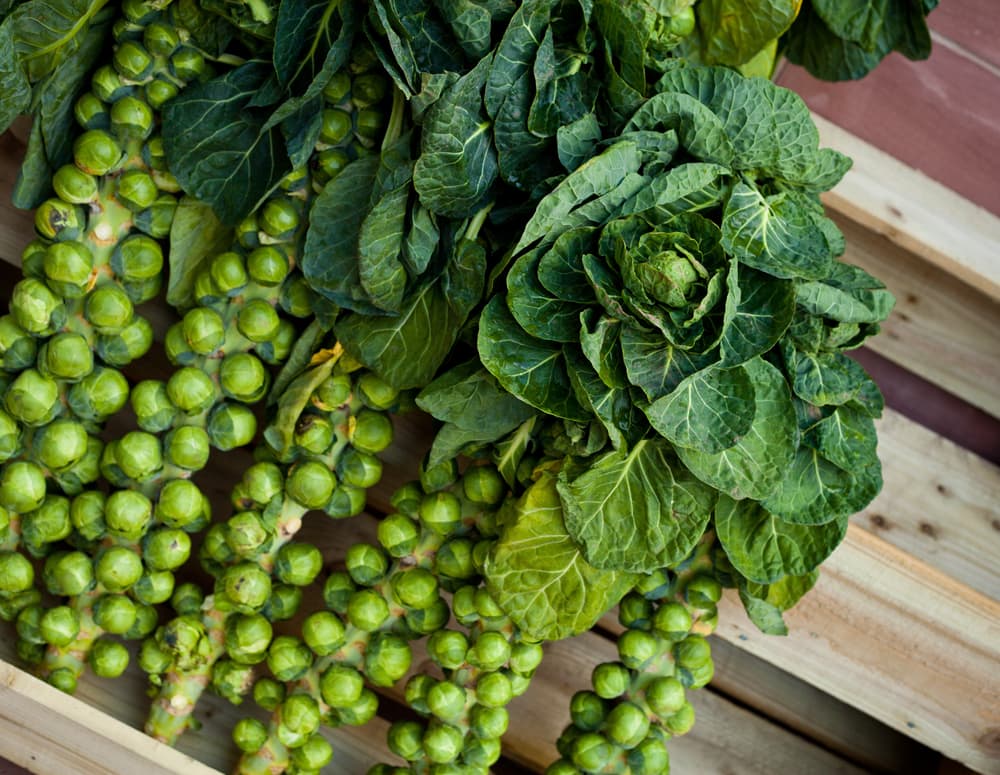
You may also be surprised by how much better sprouts taste when picked from the garden rather than being bought at a store.
One of the other main reasons to grow Brussels sprouts at home is that they provide you with fresh homegrown vegetables in the coldest and darkest part of the year, when little else is available from an outdoors vegetable plot.
Common Varieties
There are a number of different varieties of Brussels sprouts ideal for UK gardens.
Some good choices include:
- ‘Brodie’
- ‘Clodius’
- ‘Crispus’
- ‘Doric’
- ‘Igor’
- ‘Maximus’
- ‘Red Ball’
- ‘Red Rubine’
- ‘Roodnerf’
Some are F1, and some are heritage seeds. Most are green, though some, as the names suggest, have red and purple hues.

How To Grow Brussels Sprouts
Sowing
Brussels sprouts are a crop that is typically sown from February until early April.
Seeds are sown indoors, undercover in a greenhouse or polytunnel, under cloches or in a cold frame.
Seeds should be spaced thinly, around 1-1.5cm deep.

If sown directly into the soil, seedlings should be thinned to at least 7.5cm apart.
Though seeds can germinate with temperatures as low as 4°C, germination rates will be highest at temperatures above 7°C.
Planting Out
Your Brussels sprout seedlings should then be transplanted to their final growing positions during May and early June, when your young plants will be 10-15cm tall, and have around 7 true leaves.
Seedlings should be well watered before they are transplanted, then watered in well after they are placed into your vegetable garden.
In most cases, you should aim to space your Brussels sprouts around 60cm apart.
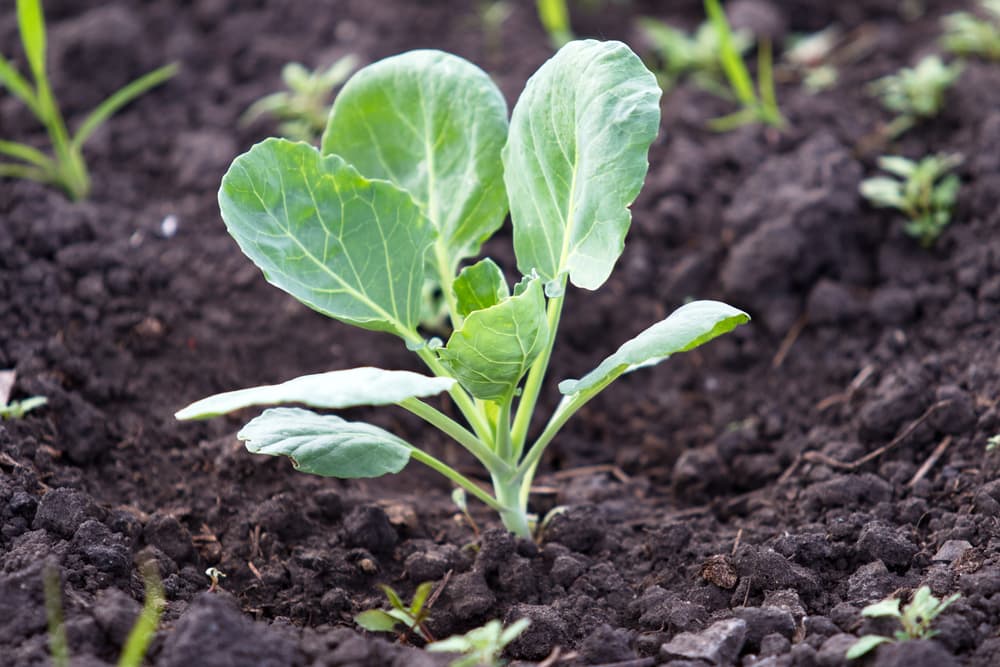
When choosing a location for Brussels sprouts, note that they can thrive in any sunny and sheltered position.
They can cope with some light shade, but a sunnier site will provide better yields.
Brussels sprouts can cope with a range of different soil types, but will do best in a rich soil, with a neutral to alkaline pH (above 6.5).
Acidic conditions can increase the likelihood of problems with club root.
Where the soil is affected with club root, growing in containers may be a better option.
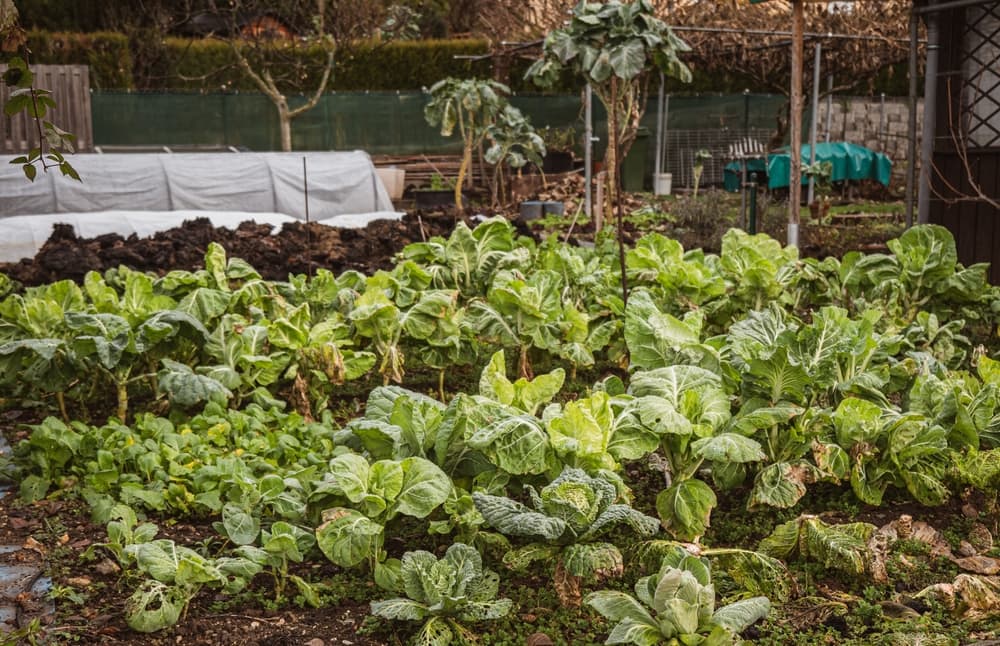
Before planting your Brussels sprouts, add plenty of organic matter, such as homemade compost or well-rotted manure, to the growing area.
When planting, ensure that you firm the soil well around the plants, to make sure the root systems are not damaged by wind rock.
“Planting them slightly deeper and burying their lowest leaves improves stability,” says Peter Lickorish, a Horticultural Lecturer and Gardening Technician at Bedford College.
“Remember that these plants can be badly affected by wind-rock.”
Companion Planting
In an organic garden, it is always best to adopt a holistic and integrated approach.
You should consider the different ways in which your crops can be combined and in which additional companion plants can be added to aid the sprouts, and the system as a whole.
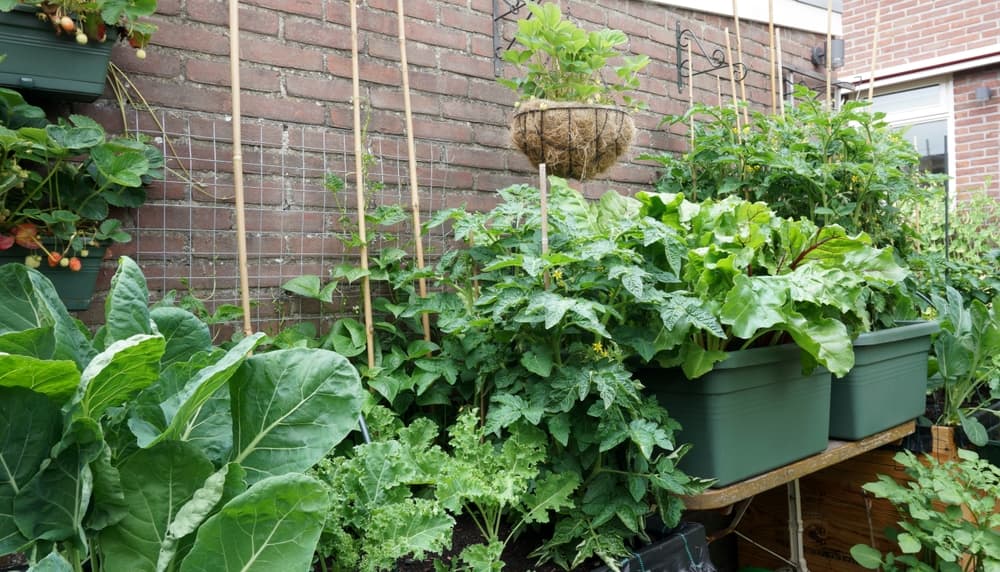
Of course, it is common to sow Brussels sprouts in the same bed as other brassica crops.
Planting these in the same growing area will make it easier to maintain a crop rotation system and make sure brassicas are not grown in the same bed year after year.
Of course, other brassicas like similar conditions, so can grow well in the same area.
Unfortunately, though they can be good companions, brassicas share pests and diseases.
This means that it is not a good idea to grow exclusively brassicas in one bed.
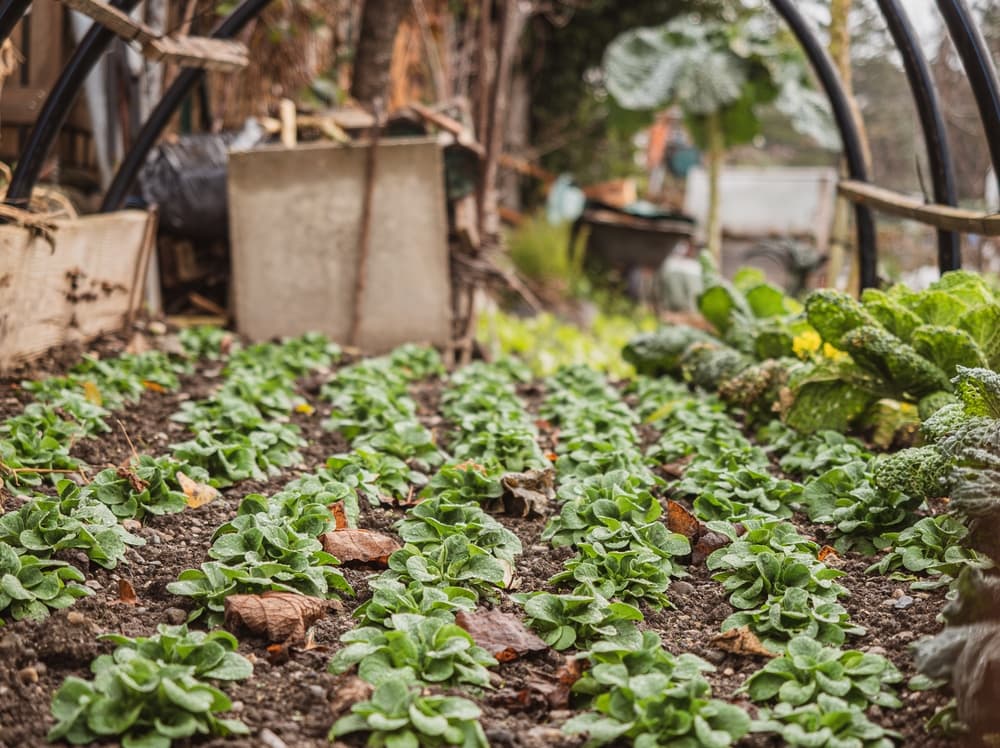
For integrated pest management in an organic garden, you should grow brassicas alongside other companion crops.
Mustard, which is another brassica, can act as a trap crop when grown close by.
But for pest management, you should also consider sowing Brussels sprouts alongside, for example:
- Onions
- Leeks
- Garlic
- Aromatic herbs (mint, thyme, rosemary, sage, dill etc..)
- Marigolds
- Nasturtiums
- Geraniums
Since Brussels sprouts require a wide spacing, and are fairly slow to mature, it also makes sense for companion plants to take up the spaces between your plants as they grow.
Try planting these fast-growing vegetables between your Brussels sprouts to make the most of the space:
As nitrogen-hungry plants, Brussels sprouts may also benefit from growing legumes, such as peas, as companion crops.3Companion Planting Guide. (n.d.). First Tunnels. Retrieved April 25, 2023, from https://www.firsttunnels.co.uk/page/Companion-Planting-Guide
Avoid planting strawberries close to Brussels sprouts, however, as strawberries can suppress their growth.
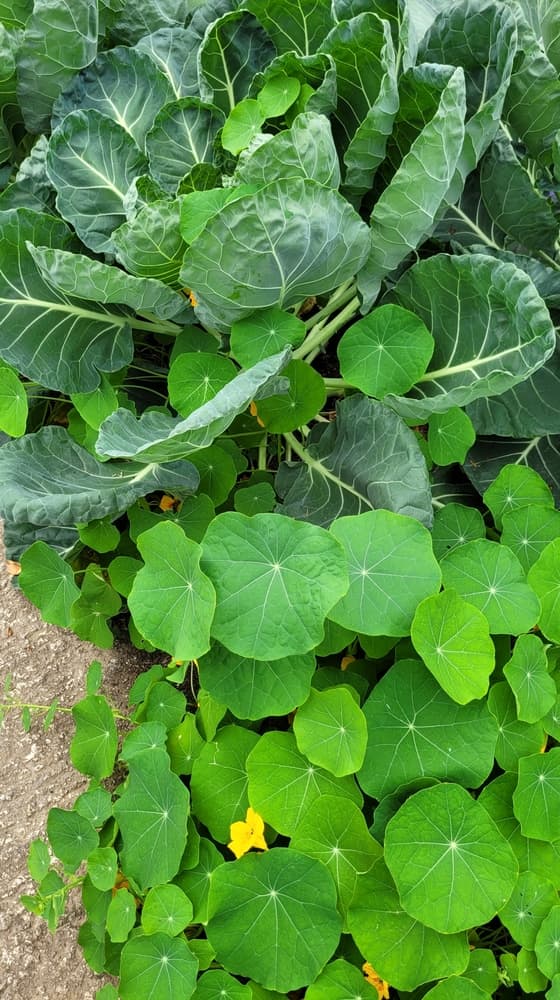
You should also avoid planting Brussels sprouts too close to other heavy feeders, such as squash, sweetcorn, tomatoes, peppers, and potatoes – and any other members of the nightshade family.
Plant Care
Watering
Water Brussels sprouts every 10-14 days in dry weather.
Water plants at the base, and make sure you have mulched around the plants to retain moisture in the soil, particularly during the warmest summer months.
Fertilisation
As nitrogen-hungry plants, brassicas like Brussels sprouts will benefit from a nitrogen-rich organic mulch.
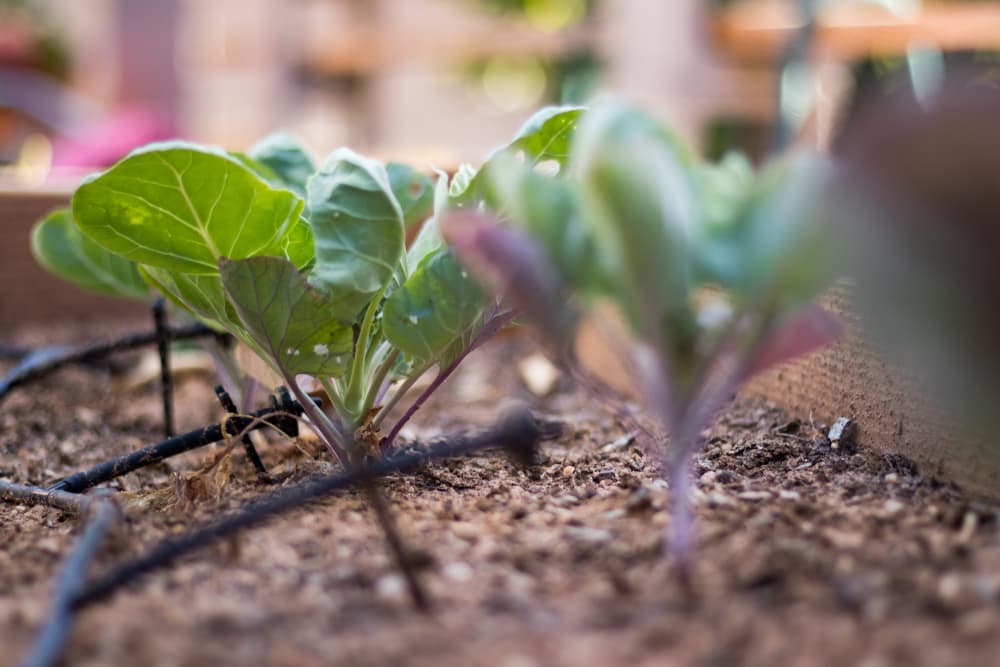
And will also appreciate the addition of a high-nitrogen organic fertiliser (such as dried chicken manure pellets, for example) after midsummer.
You might also choose to make a nitrogen-rich liquid plant feed to give the plants a boost around July.
“You could make this feed by brewing a plant nettle tea, leaving nettle leaves in a sealed container of water for around 6 weeks,” says Peter.
Pest Protection
Brussels sprouts, like other brassicas, are susceptible to pests – most common and notable among these are the caterpillars of cabbage white butterflies, and birds.
Birds (like pigeons for example) can quickly eat up an entire crop if they are not protected.
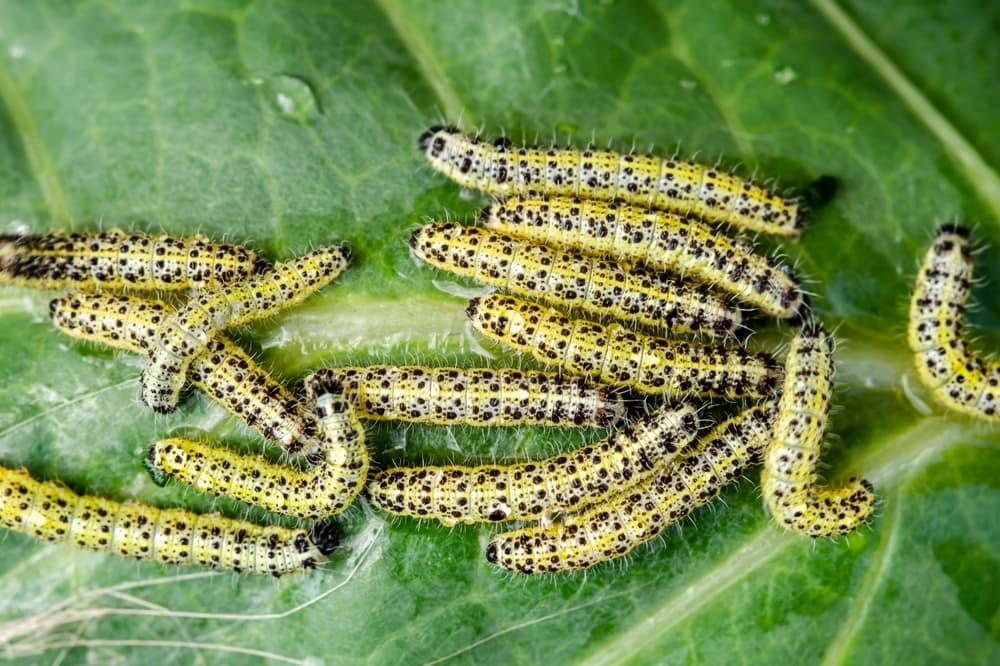
It is a good idea to place netting over Brussels sprouts and other brassica, which is sturdy enough to prevent birds from eating your crop, yet has a fine enough mesh to keep off butterflies and prevent them from laying their eggs on your crops from which caterpillars will emerge.
Though companion planting will aid with pests to a degree, sometimes a physical barrier will be required.
This should be in place from May to September.
Support
Around September, it can be a good idea to mound up the earth around your tall Brussels sprout plants, to provide them with a little more support before autumn winds and stormier, wilder weather arrives.
“It may be easiest to make a box-shaped frame, around 1-1.5m high, around your plants,” shares Peter.
“This can support netting at a far enough distance away from plants, to prevent egg-laying and pecking through the mesh.
“The frame can be held up by canes or stout poles, to which the plants can be tied for support.”
Harvesting

Brussels sprouts are usually harvested from September through to March.
It is worth noting, however, that Brussels sprouts are one of a number of vegetables which taste better after the first frosts.
The cold triggers metabolic processes through which starches break down into plant sugars – so Brussels sprouts that have been exposed to frosts and freezing temperatures will taste a little sweeter than those that have not.
Start by harvesting the lowest sprouts on the stem when they are tightly closed, firm and around the size of a walnut.
Snap each one off with a sharp tug downwards – you can leave the plants standing in your garden and take a few more sprouts as and when they are required over the winter.
References
- 1Brassica oleracea (Gemmifera Group). (n.d.). North Carolina Extension Gardener Plant Toolbox. Retrieved March 13, 2023, from https://plants.ces.ncsu.edu/plants/brassica-oleracea-gemmifera-group/
- 2Brussels Sprout. (n.d.). DPI. Retrieved March 13, 2023, from https://dpi.wi.gov/sites/default/files/imce/school-nutrition/pdf/fact-sheet-brussels-sprout.pdf
- 3Companion Planting Guide. (n.d.). First Tunnels. Retrieved April 25, 2023, from https://www.firsttunnels.co.uk/page/Companion-Planting-Guide
